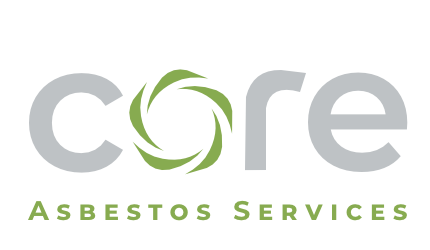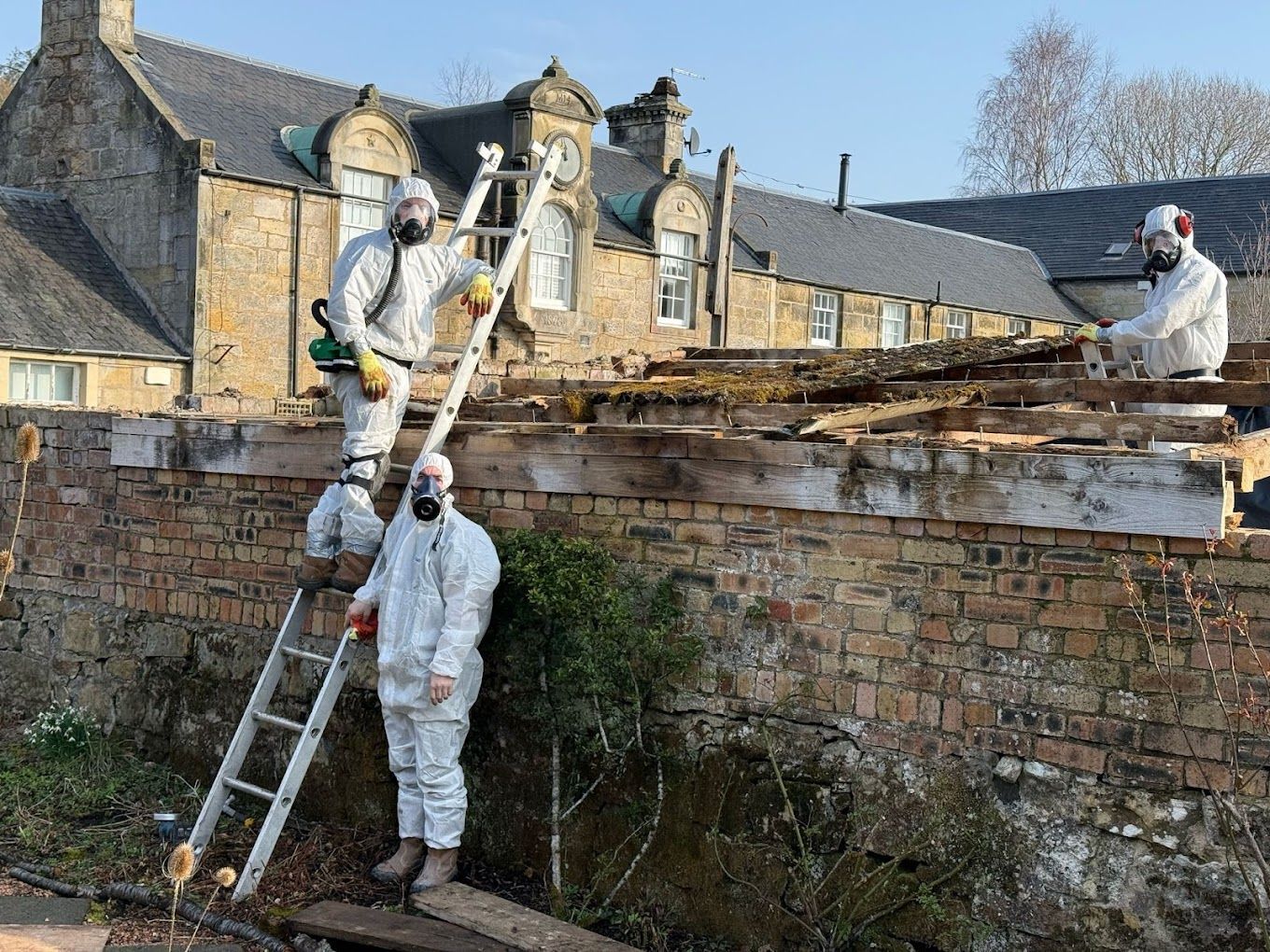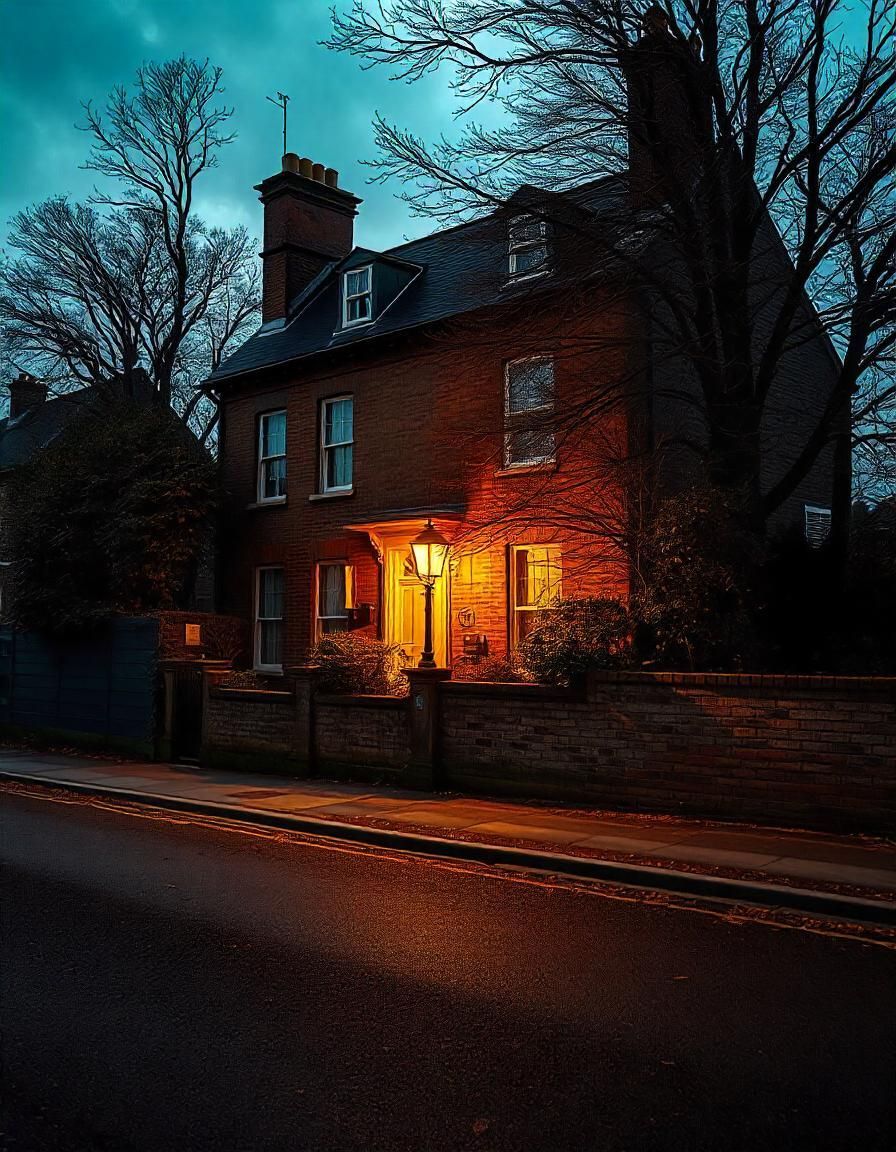Where can you find Asbestos Insulating Board (AIB)
Asbestos Insulating Board (AIB), a once-common building material, hides a dangerous secret: asbestos. Discover how to identify AIB, understand the risks, and ensure safe removal to protect your health.
Key Takeaways
- Asbestos Insulating Board (AIB) is a hazardous building material widely used in the past. It's crucial to be aware of its presence in older properties to avoid accidental exposure.
- Identifying AIB can be difficult due to its resemblance to other materials. If you suspect AIB, never attempt to handle or remove it yourself. Always contact a licensed asbestos professional for testing and safe removal.
- Uncontrolled removal of AIB poses significant health risks. Asbestos fibres released during disturbance can lead to serious lung diseases, including asbestosis and lung cancer.
- Licensed asbestos removal contractors are trained and equipped to handle AIB safely. They follow strict regulations and procedures to minimize fibre release and ensure proper disposal.
- If you're planning renovations or demolition in an older building, prioritise an asbestos survey to identify any potential AIB. This proactive step protects your health and ensures compliance with safety regulations.
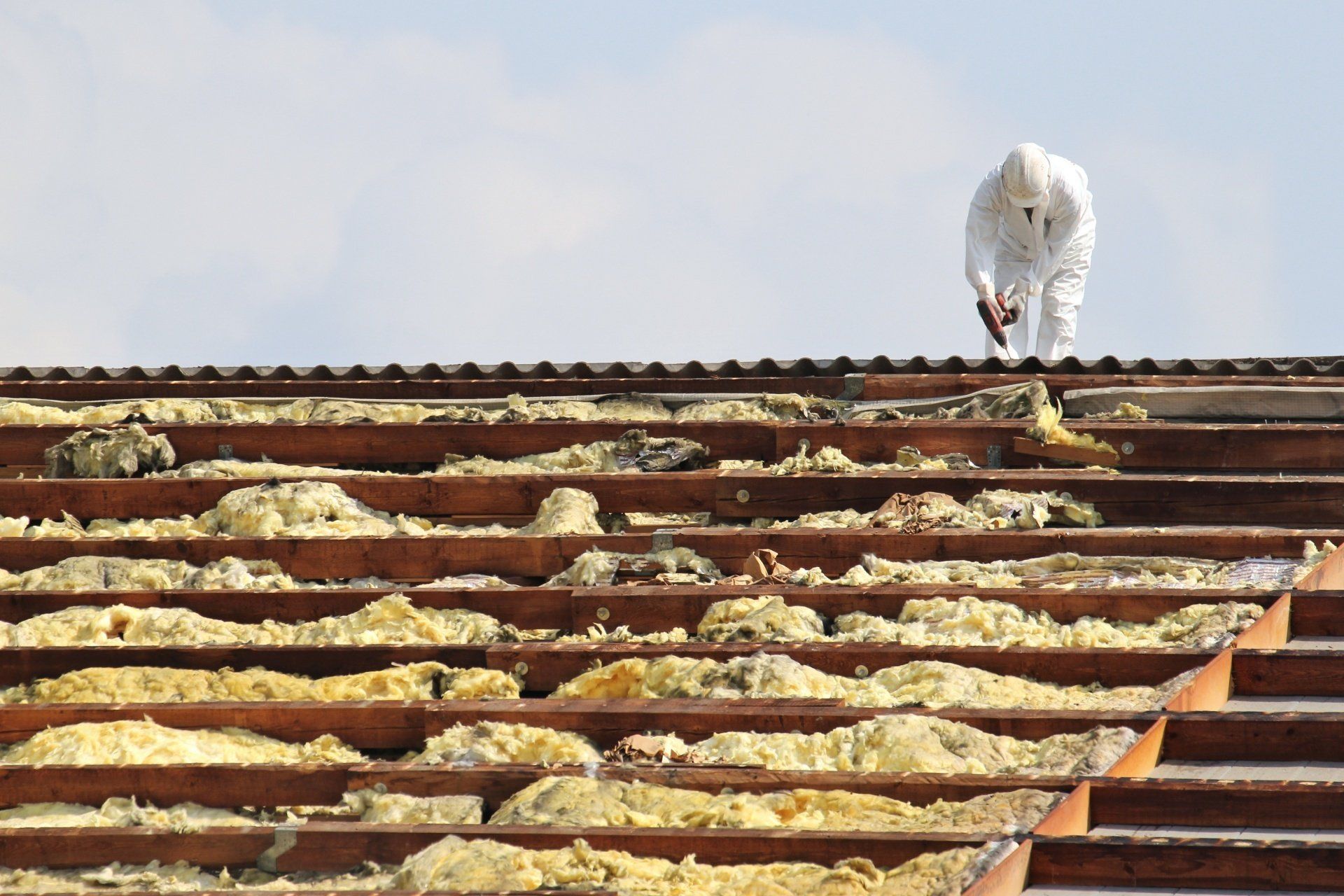
What is Asbestos Insulating Board?
Asbestos Insulating Board (AIB) is a type of building material that was widely used in the past for its excellent insulating properties, particularly in fire protection and thermal insulation. This low-density board is made from a mixture of raw asbestos fibers and other materials, typically comprising 20-40% asbestos fibre mixed with calcium silicate or plaster. Due to its versatility and effectiveness, AIB was a popular choice in construction projects, including both residential and commercial buildings, from the 1950s to the 1980s. Its ability to provide fire protection and thermal insulation made it a staple in many building applications.
Identifying Asbestos Insulating Board
Identifying Asbestos Insulating Board can be quite challenging, as it often resembles other types of building materials. AIB typically appears as flat, rigid panels or boards, which can be painted or covered by other materials, making it harder to spot. Key characteristics of AIB include its flat, rigid shape and potential for painting or covering. Since asbestos fibers are microscopic and cannot be seen with the naked eye, it is essential to carry out an asbestos survey to accurately identify AIB. This survey helps in distinguishing AIB from other materials and ensures proper handling and removal.
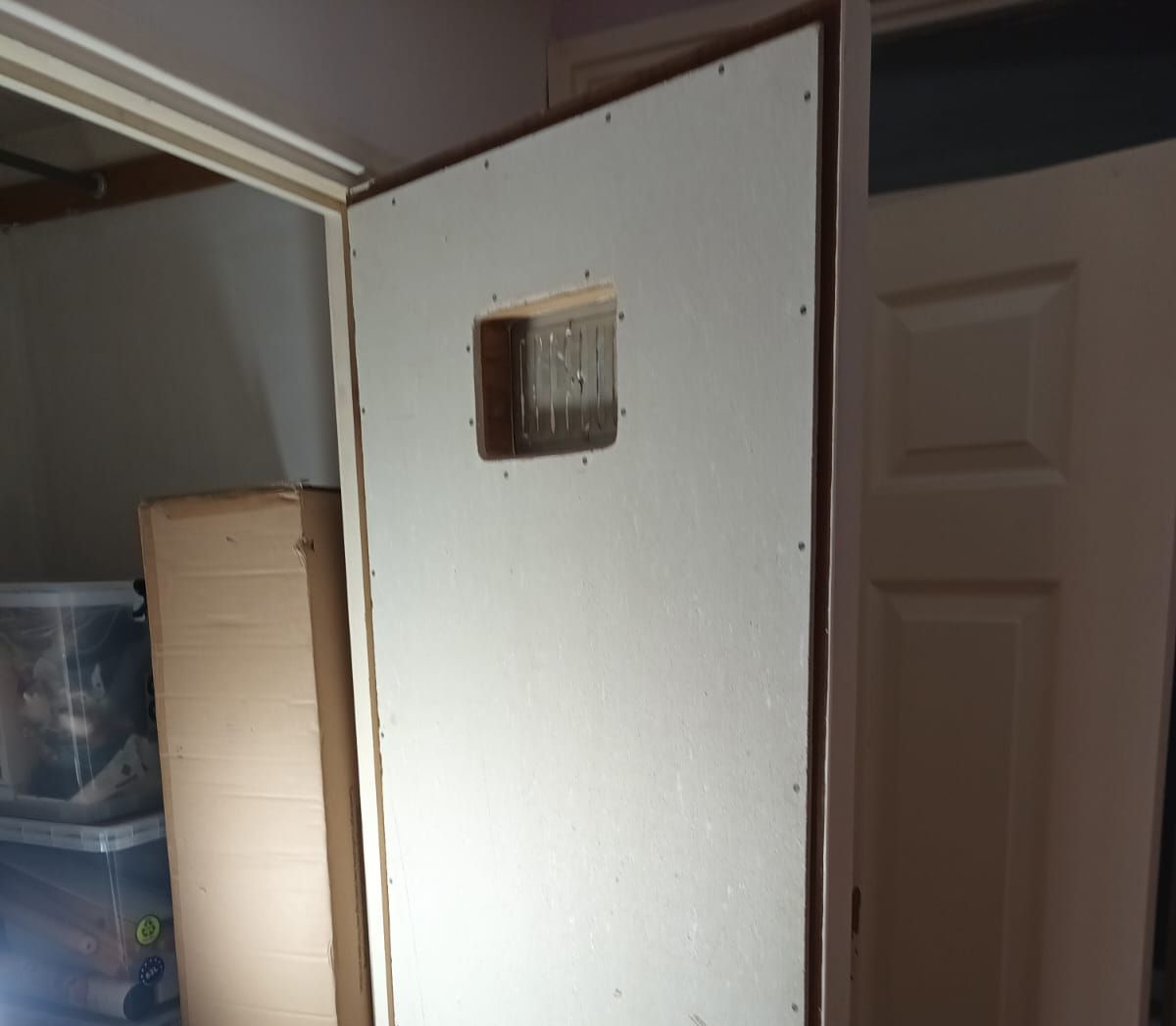
The Dangers of Asbestos Insulating Board
Asbestos Insulating Board (AIB) poses significant health risks due to its high asbestos content (20-40%). This friable material can easily release asbestos fibers into the air when disturbed, leading to dangerous exposure.
Why is AIB so hazardous?
- Friable Nature: AIB is more easily crumbled or broken than other asbestos-containing materials, like asbestos cement boards. This means fibers are more readily released during damage or renovation work.
- High Asbestos Content: The significant amount of asbestos within AIB increases the risk of fiber release and subsequent exposure.
- Common Uses in Homes: AIB was widely used in domestic properties, particularly in ceilings, walls, and roofs, making it a potential hazard in many older homes.
Remember: Even minor activities like drilling or sawing AIB can release large amounts of asbestos fibers. Prolonged exposure to these fibers can cause serious health conditions, including asbestosis and lung cancer.
Always handle AIB with extreme caution and contact a licensed asbestos removal contractor for any work involving this material.
Key facts about AIB:
- Composition: Raw asbestos fibers (20-40%) mixed with calcium silicate or plaster.
- Common Asbestos Types: Primarily Amosite (brown), but may also contain Crocidolite (blue) or Chrysotile (white).
- Historical Uses: Fireproofing, thermal insulation, plasterboard, ceiling tiles, and other common building materials.
- Prevalence: Commonly found in buildings constructed or renovated after World War 2.
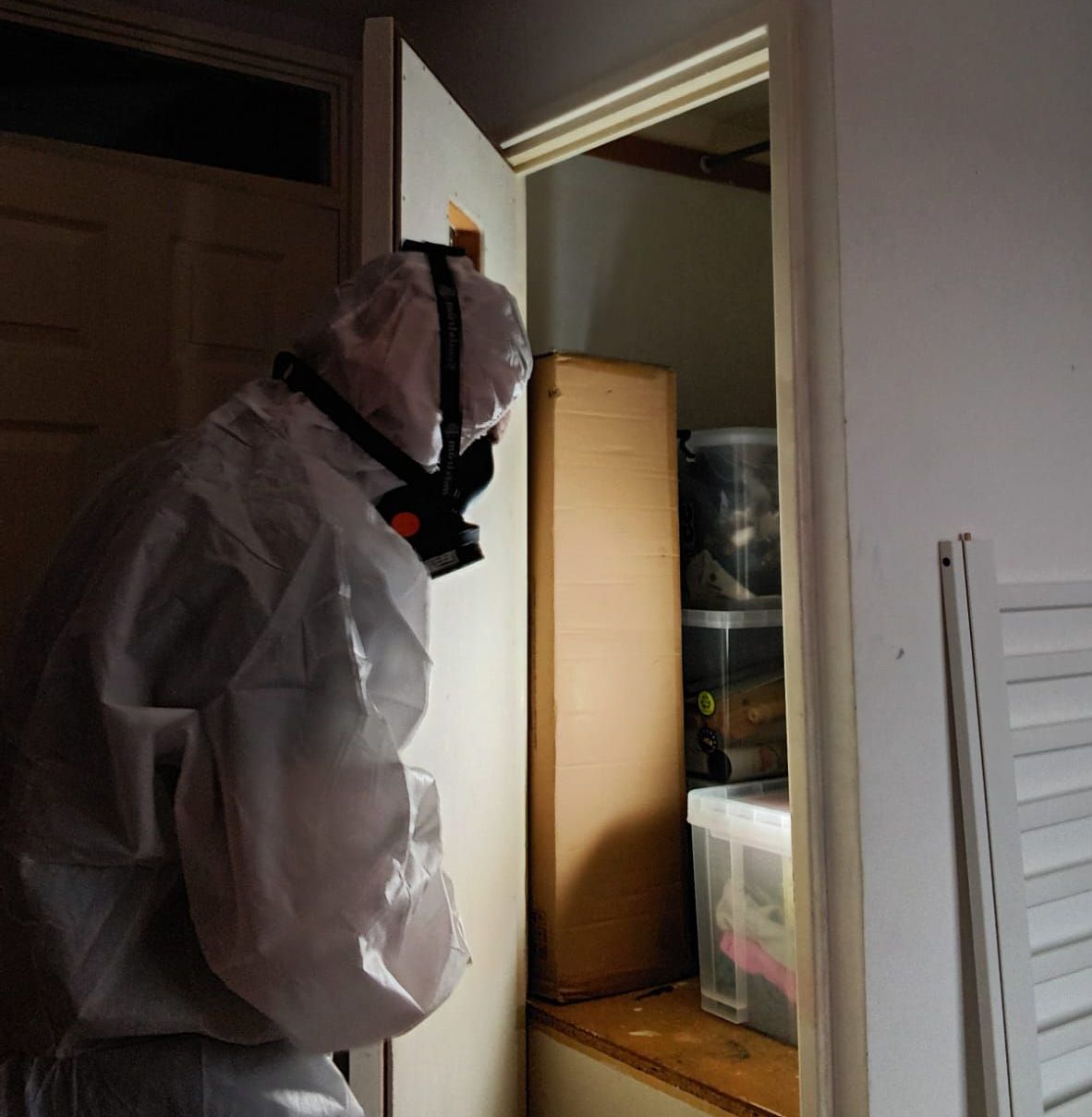
Uncontrolled removal of Asbestos Insulating Board and asbestos exposure
Uncontrolled asbestos insulation boards removal can release dangerous asbestos fibres into the air, posing severe health hazards such as asbestosis and lung cancer. The exposure is 10 fibres per centimetre. This is 100 times more than the legally recognized control limit of 0.01 f/cm3. Uncontrolled asbestos board removal is dangerous because asbestos exposure above the limit is much more hazardous than asbestos exposure below it.
It’s easy to see that working on asbestos insulation board requires a license. Only those licensed by HSE should be allowed to perform the work. The removal and cleaning process is crucial in safely handling asbestos, involving careful preparation, fiber suppression, and thorough cleaning to ensure no residue remains.
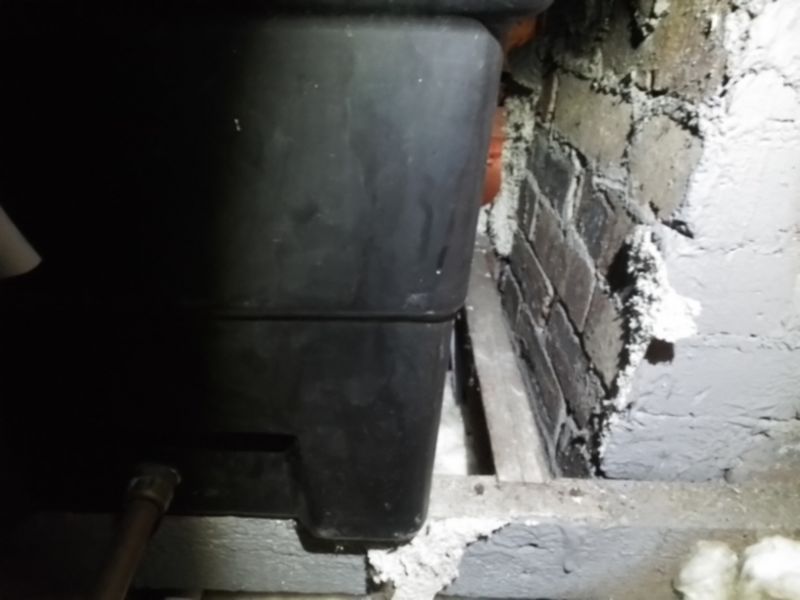
Controlled removal of Asbestos Insulating Board by licensed asbestos removal contractor
Good project planning is crucial for the controlled removal of asbestos insulating board. Asbestos Insulating Board (AIB) was commonly used in fire doors and infill panels due to its fire retardant properties, making it prevalent in both residential and commercial buildings.
The following are essential for good project planning and assessment of removal requirements:
- Notification to the HSE: Once all paperwork and fact-finding have been completed, the project must be notified to the HSE with an exact start date. It is required by law that licensed asbestos removal contractors notify the HSE 14 days before any work is performed. This can be done via their online form ASB5.
- Thorough Site Preparation: Before work can begin, the area must be meticulously prepared.
- All necessary paperwork must be readily available for inspection.
- Welfare facilities must be in place and compliant with current regulations.
- Access and work areas must be inspected and verified to be acceptable.
- The work area must be cleared of any unnecessary items.
- Pre-cleaning is often required before constructing the enclosure.
- Adequate warning signs and barriers must be in place to protect and warn others.
- Careful AIB Removal: The most important control measures are careful handling and fibre suppression.
- The removal method will depend on how the asbestos board was fixed (screws, nails, etc.).
- Extreme care must be taken to avoid damaging the AIB during removal.
- Removed AIB must be carefully wrapped or bagged to prevent fiber release.
- Any dust or debris released during the process should be immediately removed.
- Thorough Cleaning: After all AIB has been removed and securely bagged, a thorough fine cleaning of the area is essential.
- Final Inspection: A visual inspection of the site is conducted to ensure it is in good condition, the decontamination unit is functional, and there is no remaining clutter or contamination.
All of these steps are essential and contribute to the higher cost of asbestos insulation board removal compared to general demolition or removal work for non-asbestos materials. The cost of removing asbestos insulating board will vary depending on the complexity and size of the project.
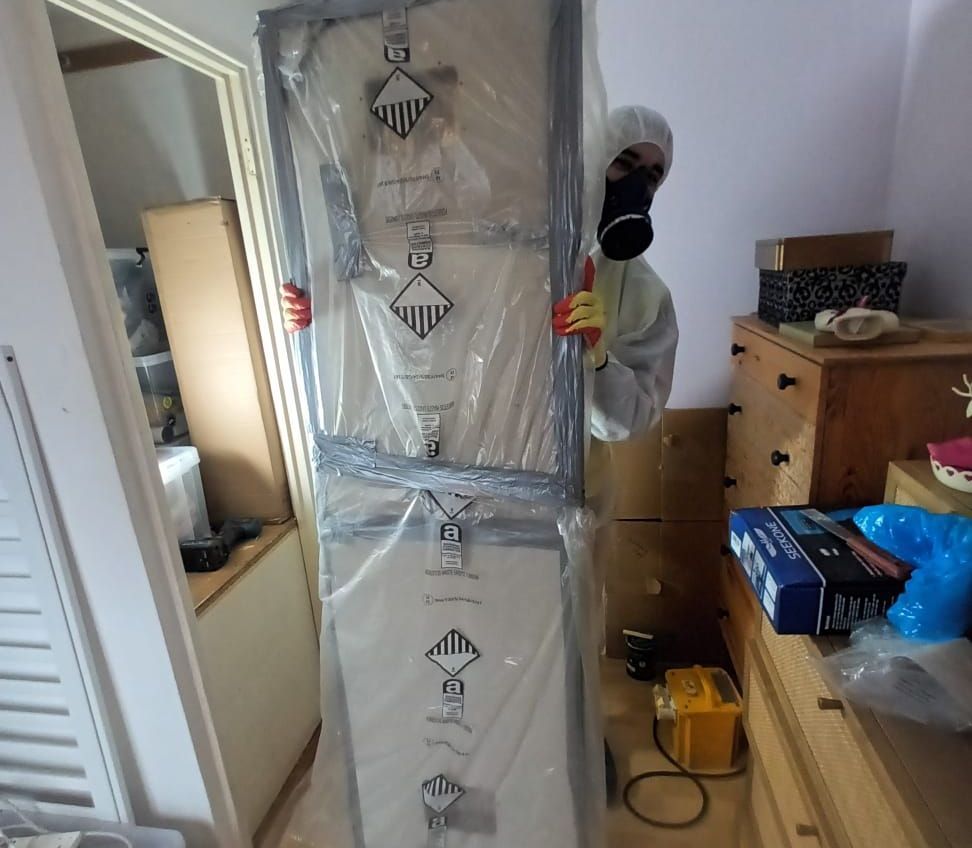
Case Study: Hidden Danger in a Buckstone Doorway
Location: Domestic property, Buckstone, Edinburgh
Situation: A homeowner in Buckstone, Edinburgh, recently purchased a property and wisely commissioned Core Asbestos to conduct a management survey. During the survey, our team discovered a hidden danger lurking within a seemingly ordinary door. The door was found to be lined with Asbestos Insulating Board (AIB).
Challenge: AIB is a highly friable material with a high asbestos content. Disturbing the door during renovations or removal could release dangerous asbestos fibers, posing a serious health risk to the homeowner and their family.
Solution: Our highly trained, experienced asbestos removal team took immediate action to safely remove the asbestos-lined door. Following strict safety protocols, the team carefully contained and disposed of the hazardous material, ensuring the homeowner's property was safe and free from asbestos contamination.
Outcome: Thanks to the proactive management survey and the expertise of Core Asbestos, a potentially dangerous situation was identified and resolved before any harm could occur. The homeowner gained peace of mind knowing their home was safe, and they avoided the significant health risks associated with asbestos exposure.
This case study highlights the importance of asbestos surveys, especially in older properties. Hidden asbestos can lurk in unexpected places, and professional identification and removal are crucial for protecting your health and safety.
Disposal of Asbestos Waste
The disposal of asbestos waste requires careful handling and adherence to strict regulations. Asbestos waste must be removed from the site and transferred to a licensed waste carrier or a relevant asbestos waste transfer station.
The waste must be properly packaged, labelled, and transported to prevent any potential asbestos exposure during transit. It is essential to ensure that the disposal process is carried out by a licensed asbestos removal contractor to minimize the risks associated with asbestos waste disposal. Proper disposal not only ensures compliance with regulations but also protects public health and the environment.
The cost of removing asbestos insulating board varies depending on the project. If you need a quote or pricing information, the Core Asbestos Services Removal and Disposals team will provide it quickly. Contact a member of our team to get help.
What Does Asbestos Insulation Board Look Like?
Asbestos Insulation Board (AIB) often appears as flat, rigid panels or boards, similar to plasterboard or ceiling tiles. It can be white, grey, or brown, and may be painted or covered with other materials.
Key characteristics:
- Flat and rigid
- Often found in ceiling tiles, wall panels, and fire doors
- May have a slightly textured surface
Important note: Never attempt to identify AIB yourself. If you suspect asbestos, contact a licensed professional for testing.
How to Dispose of Asbestos Insulation Board
Do not attempt to dispose of asbestos insulation board yourself. It's crucial to follow these safety guidelines:
- Hire a licensed asbestos removal contractor: They have the training and equipment to handle and dispose of asbestos waste safely.
- Proper packaging: The contractor will double-bag or wrap the AIB in heavy-duty plastic to prevent fiber release.
- Labeling: Asbestos waste must be clearly labeled according to regulations.
- Transportation: A licensed waste carrier will transport the bagged AIB to a designated asbestos waste disposal facility.
Important: Disposing of asbestos insulation board without following these steps is illegal and poses a serious health risk to yourself and others.
When did Asbestos Insulation Board Stop Being Used?
The use of asbestos insulation board (AIB) in the UK was phased out in the late 1980s.
1985: Blue and brown asbestos were banned.
1999: All types of asbestos were completely banned in the UK.
Therefore, buildings constructed before the year 2000 may still contain AIB.
